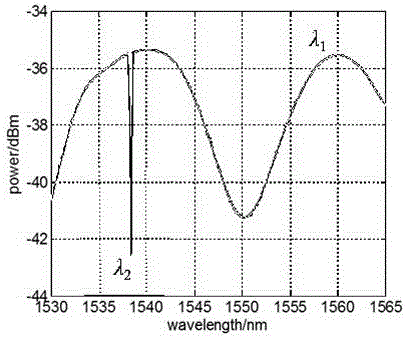Optical fiber sensor capable of simultaneously measuring hydrogen concentration and temperature
An optical fiber sensor, hydrogen technology, applied in thermometers, measuring devices, measuring heat, etc., can solve the problems of complex preparation process, high cost, unstable structure, etc., and achieve the effect of simple preparation process, reduced impact, and stable structure
- Summary
- Abstract
- Description
- Claims
- Application Information
AI Technical Summary
Problems solved by technology
Method used
Image
Examples
Embodiment Construction
[0014] In order to make the object, technical solution and advantages of the present invention clearer, the specific structure, principle and working process of the present invention will be further described in detail below in conjunction with specific embodiments and with reference to the accompanying drawings.
[0015] Such as figure 1 Shown is an optical fiber sensor that can simultaneously measure hydrogen concentration and temperature proposed by the present invention. Its working process is as follows: the light emitted by the wide-spectrum light source first passes through the single-mode fiber and then enters the coreless fiber, then enters the single-mode fiber grating, and finally enters the spectrometer to monitor the spectral shift. Among them, the single-mode optical fiber, the coreless optical fiber and the single-mode optical fiber grating are fused by a fusion splicer.
[0016] When the light is transmitted from the single-mode fiber to the core of the corele...
PUM
 Login to View More
Login to View More Abstract
Description
Claims
Application Information
 Login to View More
Login to View More - R&D
- Intellectual Property
- Life Sciences
- Materials
- Tech Scout
- Unparalleled Data Quality
- Higher Quality Content
- 60% Fewer Hallucinations
Browse by: Latest US Patents, China's latest patents, Technical Efficacy Thesaurus, Application Domain, Technology Topic, Popular Technical Reports.
© 2025 PatSnap. All rights reserved.Legal|Privacy policy|Modern Slavery Act Transparency Statement|Sitemap|About US| Contact US: help@patsnap.com


